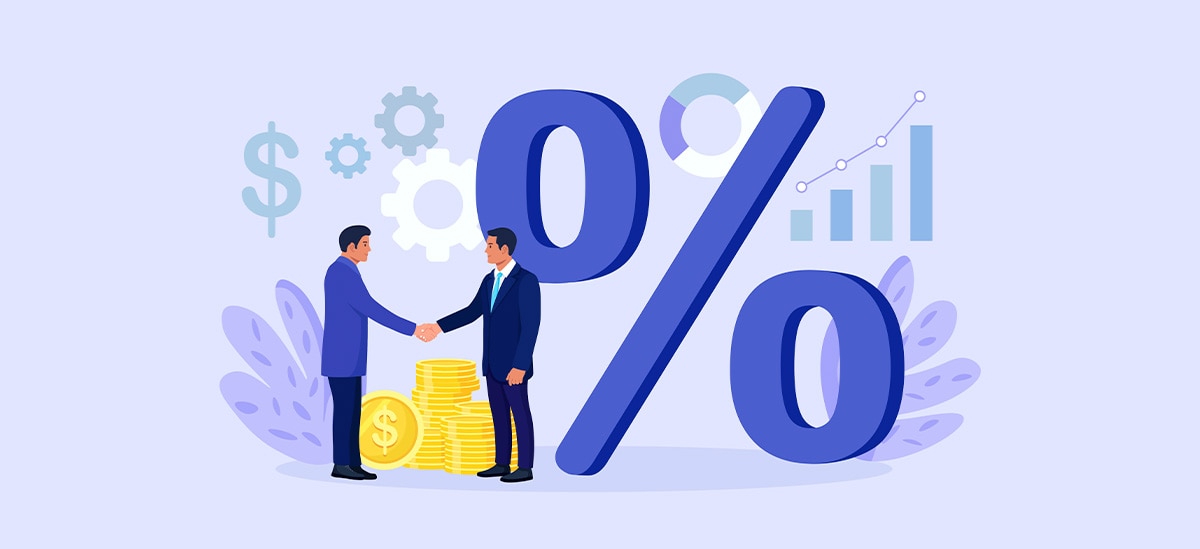
- Rising rates mean an increase in the price of borrowing money.
- Falling rates open windows for refinancing and potentially more affordable expansion.
- Strategic loan timing can improve your financial position.
- Active debt management helps navigate changing rate environments.
In its March 2025 meeting, the Federal Reserve held its target rate steady at 4.25-4.5%, noting "uncertainty around the economic outlook has increased."[1] This decision has direct implications for your business.
Interest rates are what you pay to borrow money. When rates go up or down, your payments on loans, credit lines, and credit cards follow suit. Even a small rate change can move the needle, particularly for large, long-term loans.
Impact of Rising and Falling Interest Rates on Lending
When Rates Rise
Higher interest rates can pose real difficulties for businesses looking for financing:
- Higher borrowing costs: New variable-rate loans come with increased monthly payments, reducing working capital and narrowing profit margins.
- More selective lending: Banks typically become more cautious during rising rate periods and may have tougher lending requirements. This particularly affects newer businesses and those with moderate revenue histories.
- Delayed growth plans: Many business owners put growth on hold when borrowing costs more. That new location, equipment upgrade, or additional staff position gets pushed back, while competitors who can still afford to grow may gain an edge.
- Changes in customer spending: As rates climb, consumers often cut back on spending. Their mortgage and car payments increase, leaving less money for other purchases. This often means slower sales for small businesses.
When Rates Fall
Declining interest rates can create valuable opportunities to increase cash flow and profitability:
- More affordable financing: When rates drop, borrowing gets cheaper. This puts bigger loans within reach and makes investments that were previously too costly possible.
- Refinancing benefits: Businesses carrying high-interest debt can refinance at improved rates, increasing cash flow and strengthening monthly financial positions, which in turn can boost the bottom line.
- More attractive investment opportunities: Lower financing costs make investments in facilities, equipment, or technology more financially sound, supporting faster business development.
- Improved customer spending: Lower rates generally increase consumer buying power, often resulting in revenue growth across various business sectors.
Adapting Your Business Strategy
Timing Loans for Better Financial Results
The timing of when you borrow money matters for your bottom line:
- Monitor rate indicators: Follow economic reports and Federal Reserve announcements for directional insights. When increases appear likely, securing fixed-rate financing sooner may provide long-term savings.
- Choose your loan type wisely: Look at both fixed and variable-rate options based on what makes sense for your business. Fixed-rate loans keep payments the same each month, while variable-rate loan payments may change over time. Fixed-rate loans help mitigate risk because the rate is the same for the life of the loan. In contrast, variable-rate loans can be advantageous in a decreasing rate environment, but disadvantageous in a rising rate environment. Understanding which approach fits your cash flow needs matters when choosing the right lender.
- Look into Small Business Administration (SBA) loans: SBA programs often have more flexible terms than standard bank loans and may offer more competitive interest rate structures. Understanding how to get a business loan, especially SBA options, can provide advantages during changing rate periods.
- Look good to lenders: Banks want to see stable income, manageable debt, and good credit. Work on these basics to improve your loan approval prospects and lock down better rates, no matter what's happening in the economy.
Managing Existing Debt When Rates Change
Keeping a close eye on your debt makes sense when rates are changing:
- Check your loans regularly: Review the loans you already have and credit accounts to spot refinancing opportunities or places where rate increases could hurt you. This is especially important for self-employed individuals who often have varied and distinctive financial needs.
- Consider consolidation opportunities: If you maintain several higher-interest loans, consolidating into a lower-rate option may reduce interest costs and simplify your payment structure.
- Plan for rate changes: If you have variable-rate loans, be ready for payment adjustments. Set aside some cash reserves and know which expenses you could cut if needed. Having a backup plan is smart when the economy feels shaky.
- Adjust growth approaches: During rate changes, reassess how you're financing growth. Sometimes, moderating expansion to avoid expensive debt makes business sense. Learning how to navigate tight lending conditions gives you practical approaches to different rate environments.
Navigating Rate Changes Effectively
Interest rate fluctuations remain a consistent feature of business operations. You can't control what the Fed does with rates, but you can prepare your business for different rate scenarios.
Know how rate changes will hit your specific business, keep some financial wiggle room, and build solid relationships with your bankers. These steps will help your business weather rate swings and help you stay on track for the long haul.




